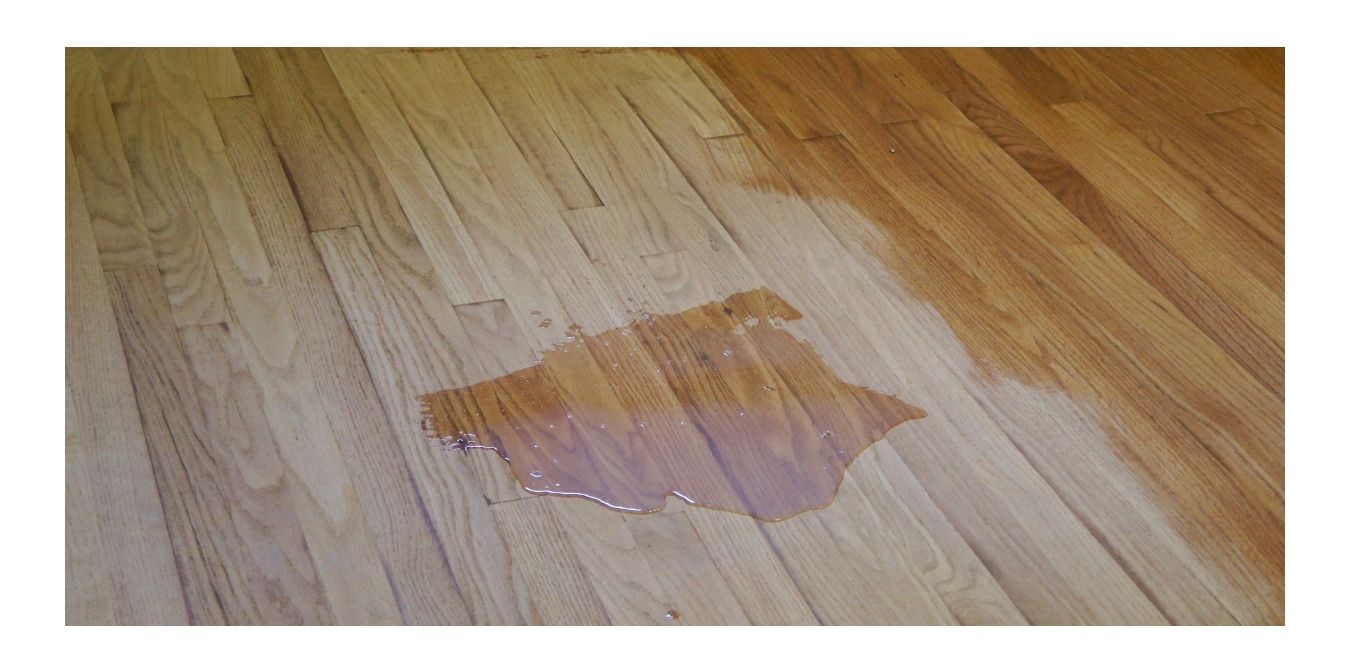Have you ever accidentally stepped in a puddle of something less than desirable and found yourself with a haunting reminder on your hardwood floors? Black urine stains can be stubborn, unsightly, and frankly, a bit embarrassing. But fear not! There are effective ways to tackle these stains and restore your floors to their former glory. This guide will walk you through the most effective cleaning methods and provide insights to prevent them in the future.

Image: liquidcleaned.com
Whether it’s a curious feline’s accident, a clumsy toddler’s mishap, or even a health issue, the resulting black stains can feel overwhelming. But don’t despair! With the right knowledge and techniques, you can effectively eliminate these stains and keep your hardwood floors looking their best.
Understanding Why Black Urine Stains Are So Difficult
The Science Behind the Stain
Urine, especially from animals who are prone to urinary tract infections or other health issues, can contain high levels of uric acid. This uric acid crystallizes upon drying, which is what creates the stubborn, dark, often almost black stain. These stains can also penetrate deep into the wood’s pores, making them even more difficult to eliminate.
Wood Types and the Impact
While the principle remains the same, some wood types tend to absorb and retain stains more readily than others. Softwoods like pine are generally more porous and will absorb stains more easily than hardwoods like maple or oak. Additionally, the finish on your hardwood floor plays a crucial role in how the stain penetrates. Unfinished or waxed floors are more susceptible to deep stains than sealed ones.
![How To Remove Black Urine Stains From Hardwood Floors? [Answered]](https://themarmoleumstore.com/wp-content/uploads/2022/11/water-laminated-floor-living-room_284753-1097.jpg)
Image: themarmoleumstore.com
The Multi-Step Approach
You’ll need a multi-pronged approach to tackle black urine stains. We’ll be combining methods that address both the surface stain and the potential deeper penetration. Remember, patience is key – these stains might not disappear after a single application.
Step 1: The Initial Attack
Begin by carefully cleaning the affected area. You can use a mild detergent, soap, or a specialized cleaner specifically designed for urine stains, diluted with warm water. Avoid harsh chemicals or abrasive cleaners, as these can damage the wood’s finish.
- Hydrogen Peroxide: Dilute a solution with water (approximately 3 parts water to 1 part peroxide) as a natural stain remover. This mixture can work for lighter stains.
- Baking Soda Paste: Create a paste with baking soda and water, apply to the stain, and allow it to sit for several hours before wiping away.
- Vinegar Solution: A mixture of vinegar and water (1:1 ratio) can help lift and neutralize the stain. However, test this on an inconspicuous area first, as vinegar can sometimes dull the wood’s finish.
Step 2: Scrub, But Gently!
Once you’ve applied your chosen cleaner, carefully scrub the area using a soft-bristled brush or a non-abrasive cleaning cloth. Be sure to work gently to avoid damaging the surface of the wood.
Step 3: The Power of Absorption
Dampen a clean cloth and place it over the stain. Leave it in place for at least several hours, allowing the cloth to absorb the remaining residue. The weight of the damp cloth can help draw out moisture from the deeper layers of the wood.
Step 4: The Final Touches
After the cloth has absorbed as much as it can, rinse the area with clean water. Wipe it dry thoroughly using a fresh towel. Finally, apply a wood floor polish or sealant to protect the wood and prevent future stains from penetrating as deeply.
Prevention is Power
While eliminating existing stains is important, the best approach is to prevent them in the first place. Here are some additional tips to reduce the likelihood of future black urine stains on your hardwood floors.
- Regular Cleaning: Frequent cleaning keeps your floors free of dirt and debris and helps prevent stains from setting in.
- Promptly Address Accidents: Clean up messes immediately. This is especially important for urine, as it can quickly seep into the wood and leave a stain.
- Protect Your Investment: A good quality sealant on your hardwood floors creates a barrier against stains. Consider regular re-sealing for maximum protection.
- Training for Pets: Proper potty training is essential for pets. If you have a pet that is prone to accidents, use absorbent pads or a designated area.
When to Seek Professional Help
Sometimes, even with the best cleaning efforts, stubborn black urine stains may persist. In these situations, it’s best to consult a professional floor cleaning company. They are equipped with specialized techniques and cleaning agents that can effectively remove even the most stubborn stains.
How Do You Remove Black Urine Stains From Hardwood Floors
Final Thoughts
Removing black urine stains from hardwood floors may require a combined approach, but it is certainly achievable. By following these steps, understanding the science behind the stains, and incorporating preventive measures, you can restore your hardwood floors to their original beauty and prevent further staining. Remember, patience, a few key products, and a bit of effort can lead to a successful cleaning outcome. And who knows, you might even discover a new appreciation for the resilience of your hardwood floors!






